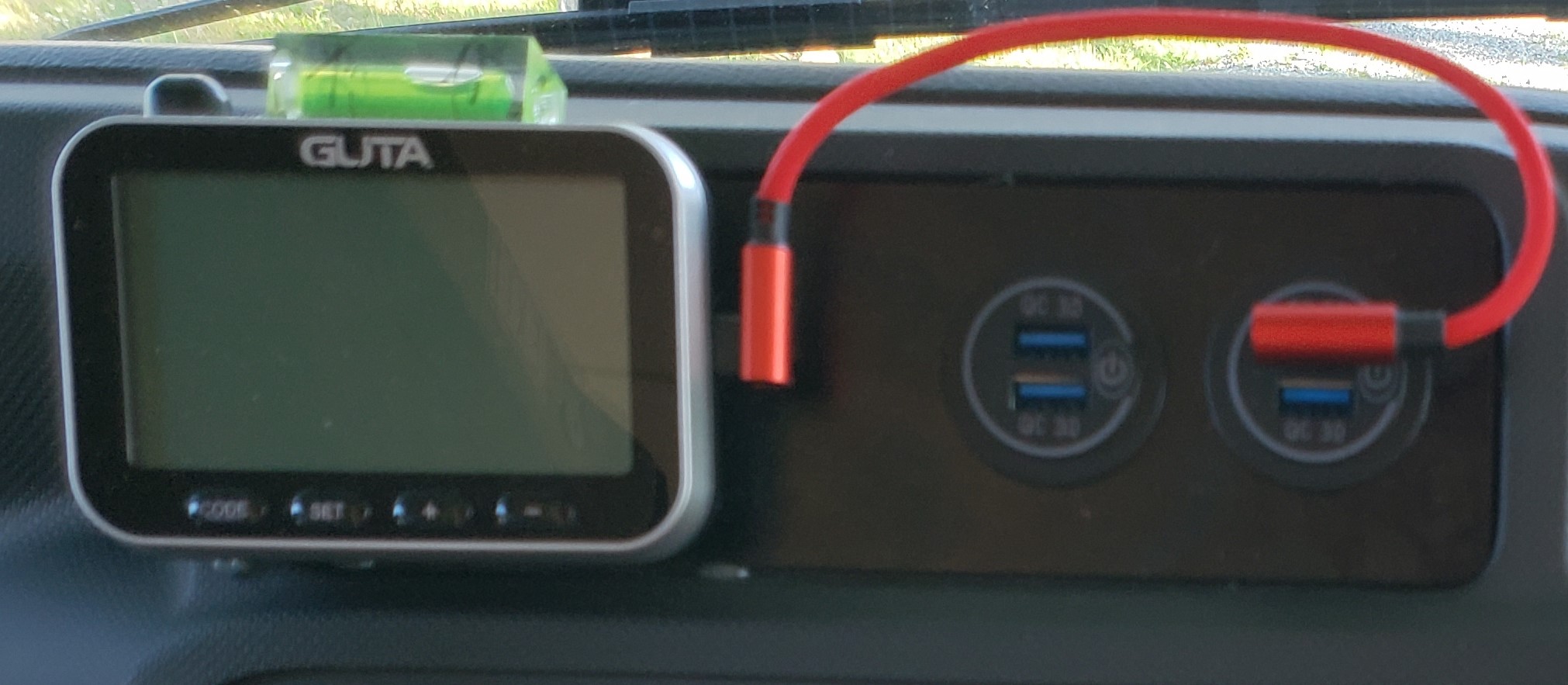TPMS Usage 101
The Tire Pressure Monitoring System (TPMS) is an auxiliary display that graphically shows the vehicle (and our tow vehicle when attached). There is a touch-sensitive switch on the right side of each of the UBB outlets in the picture that turns each USB on, thereby powering the TPMS display. These USB outlets use the engine battery, so turning these off when not needed or when the vehicle is off, is a good idea to not drain the starting battery. The display graphically shows all the tires on the motorhome on the left side and the towed vehicle on the right side. After several minutes of trying to capture the towed vehicle tire pressure, the unit will then stop trying but it will continue to display the motorhome info indefinitely.
The display graphically shows all the tires on the motorhome on the left side and the towed vehicle on the right side. After several minutes of trying to capture the towed vehicle tire pressure, the unit will then stop trying but it will continue to display the motorhome info indefinitely.
The COLD tire pressure for the two front tires should be 70 PSI each. The rear tires should all be at 80 PSI, COLD. The pressure will vary with heat and lengthy trips. Each tire’s pressure is shown on the left along with the temperature of the tire on the right side of the display. There is a built-in alarm when the temperature of any tire reaches over 115. This happens on hot days and fast driving. As long as the temperature is below 140, there is little concern. However, if there is an alarm, simply press any key on the display, once, to silence it. Check to be sure it’s not a real issue before continuing your trip. The major cause of motorhome accidents is tire blowouts.
The combination of a reliable TPMS and a steering stabilizing on Rover will help identify tire pressure and heating issues as well as help you steer straight in the even of a front tire blowout. Do not ignore tire pressure or temperature issues!
The sensors on externally mounted on the Schrader valve of each tire. The sensors send a signal to the display unit every few minutes unless there is a sudden pressure change and then it is immedaly sent to the display.. When the display is first turned on it could take multiple minutes for all the tires to show actual pressure and temperature.